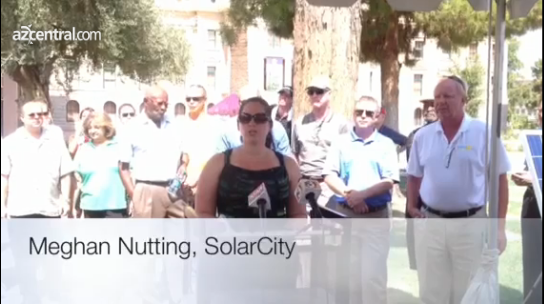While the national media are focused on Arizona because of the state’s controversial immigration law, there was virtually no coverage of a momentous leap in an area President Obama himself has declared “sexy.”
I’m talking about Arizona’s adoption, Tuesday, of a toughest-in-the-nation rule on energy efficiency.

Hot hot hot
The new rules require state-regulated utilities to cut the amount of electricity they sell 22 percent by the year 2020, through a variety of measures that help customers increase energy efficiency. These include rebates for insulating homes, planting shade trees, and buying more efficient air conditioners.
“This is huge,” says Jeff Schlegel, of the Southwest Energy Efficiency Project. “It puts Arizona in a leadership position in energy efficiency across the country.”
The rules, which still need to be approved by the state attorney general’s office, will save Arizona residents $9 billion in reduced utility bills over ten years, according to a study commissioned by SWEEP.
The Arizona Corporation Commission, which regulates utilities, voted 5-0 in favor of the measure last night.
ACC chairwoman Republican Kris Mayes, who as been called “a rock star” of the solar power movement for her past work making Arizona a leader in renewable energy production, told a local reporter she considers the energy efficiency measure “the most important thing I will ever do in my life.”
Fellow commissioner Democrat Paul Newman, in an email this morning, also stressed the importance of the new rule.
“EE [energy efficiency] is absolutely the cheapest way to reduce power costs, and carbon and toxic emission,” he wrote. “It’s an ambitious goal to be sure, but one that’s achievable and will force Arizona to pull out all the stops to reduce power use.”
Those comments were echoed by what might seem to be an unlikely source: APS, Arizona’s largest utility.
“APS is supportive of the new Energy Efficiency Standard,” said Jim Wontor, manager of the utility’s energy efficiency programs, in an email. “It is aggressive and challenging, but achievable.”
In addition to saving money for costumers, the new rule ultimately benefits the utility, wrote Wontor, by “reducing the cost to APS of meeting the increasing demand for electricity in the future.”
Not all utilities agree. Tucson Electric Power, for example, has objected to the measure it called unreasonable and costly.
SWEEP’s Jeff Schlegel, dismisses those claims. He points, instead, to additional benefits of the new rules:
“This will create 12,000 jobs, mostly in construction. It benefits consumers with lower electric bills, and it’s good for the environment.”
If the program is successful, Schlegel thinks the Arizona standard will spread to other states, and beyond.
“We hope,” he said, “that Arizona’s lead will have an impact on federal policy.”



